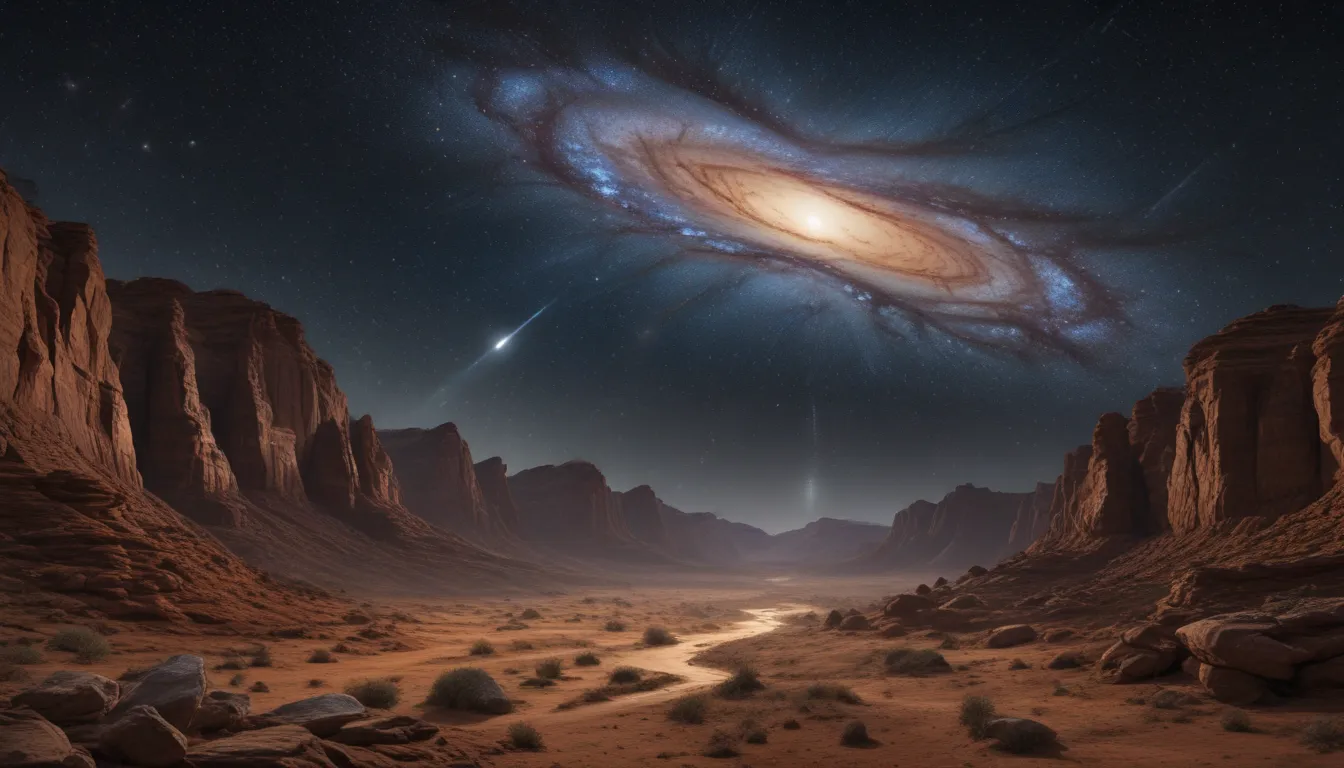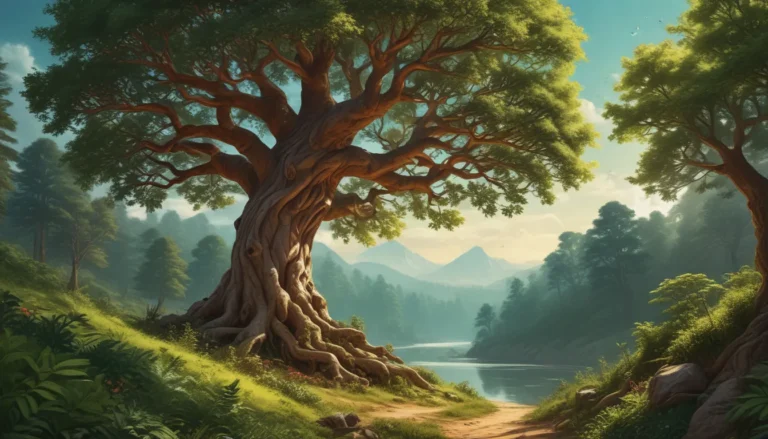The pictures we use in our articles might not show exactly what the words say. We choose these pictures to make you interested in reading more. The pictures work together with the words but don’t take their place. The words still tell you the important facts.
Introduction
Gaze up at the night sky and behold the captivating beauty of the Andromeda Galaxy, a celestial masterpiece that beckons us to explore the wonders that lie beyond our own galaxy. With its immense size, breathtaking spiral structure, and potential for collision with our Milky Way, Andromeda continues to intrigue astronomers and space enthusiasts alike. In this article, we will delve into 19 astounding facts about the Andromeda Galaxy (M31) that will leave you awestruck by its majesty and mysteries.
The Closest Spiral Galaxy to the Milky Way
The Andromeda Galaxy, also known as M31, is a stunning cosmic marvel that resides a mere 2.537 million light-years away from our Milky Way galaxy. Spanning an incredible diameter of about 220,000 light-years, Andromeda holds the title of being the largest member of the Local Group, which includes the Milky Way and several other smaller galaxies.
A Tribute to Greek Mythology
In ancient Greek mythology, Princess Andromeda was the daughter of King Cepheus and Queen Cassiopeia. The galaxy was named after her as a tribute to her beauty, adding a touch of mystique to this celestial wonder.
The Celestial Collision Course
Andromeda is hurtling towards the Milky Way at a speed of about 110 kilometers per second, on a collision course that will culminate in approximately 4.5 billion years. This collision will lead to the creation of a new, breathtaking galaxy, showcasing the cosmic dance of celestial bodies.
- Key Takeaway: Andromeda Galaxy, our cosmic neighbor, is a colossal beauty with over a trillion stars, visible to the naked eye, and heading for a collision with the Milky Way in 4.5 billion years!
The Stellar Population
Andromeda boasts a mind-boggling number of stars, estimated to be over a trillion. This vast assembly of stars contributes to the galaxy’s mesmerizing and luminous appearance, painting a picture of cosmic grandeur in the night sky.
Spiraling Spectacle
The galaxy’s spiral arms contain regions of intense star formation where young and massive stars are born, adding a vibrant touch of color and energy to the cosmic canvas. These star-forming regions showcase the dynamic nature of celestial bodies within Andromeda.
- Key Takeaway: Andromeda has two satellite galaxies, M32 and M110, which orbit around it, adding to the galaxy’s cosmic entourage.
A Black Hole’s Embrace
Andromeda hosts a supermassive black hole at its core, with a mass of about 140 million times that of the Sun. This black hole exerts a significant gravitational force, shaping the dynamics of the galaxy and its surroundings.
The Cosmic Halo
Observations have revealed that Andromeda is enveloped by a massive halo of hot gas, extending far beyond its visible disc. This halo plays a crucial role in the galaxy’s evolution and formation, adding an ethereal touch to its cosmic presence.
Galactic Cannibalism
Over billions of years, Andromeda has cannibalized smaller galaxies in its vicinity, contributing to its size and stellar population. This process of galactic mergers has shaped the evolution of Andromeda, creating a rich tapestry of celestial bodies.
Cosmic Collision Spectacle
When Andromeda and the Milky Way eventually collide, the gravitational interactions between stars and gas will give rise to stunning cosmic phenomena, including the formation of new stars and galactic tidal tails. This collision promises a spectacular show of cosmic fireworks in the night sky.
Enigmatic Emissions
Scientists have detected powerful emissions of radio waves and X-rays emanating from Andromeda, providing valuable insights into the galaxy's magnetic fields and high-energy processes. These emissions add to the mystique and intrigue surrounding this cosmic giant.
Evolutionary Mirror
Despite their separate origins, the stars within Andromeda Galaxy exhibit a similar pattern of spiral arms, star clusters, and stellar nurseries to those found within the Milky Way. This similarity highlights the cosmic interconnectedness and diversity within our universe.
Journey Through Time and Space
The light that we currently see from the Andromeda Galaxy started its journey over 2 million years ago, traversing the vastness of space and time to reach our eyes. This ancient starlight serves as a reminder of the timeless beauty and wonder of our universe.
The Promise of a New Galaxy
After the collision with the Milky Way, the two galaxies will merge and gradually settle into a new, larger galaxy, bearing remnants of their spiral past. This resultant elliptical galaxy will represent a cosmic masterpiece, showcasing the transformative power of celestial events.
Ambitious Exploration Missions
Scientists and astronomers have launched ambitious missions to study Andromeda in unparalleled detail, seeking to unravel the secrets of this majestic galaxy. These missions offer a glimpse into the complexities and mysteries of Andromeda, providing valuable insights into the broader universe.
Conclusion
The Andromeda Galaxy stands as a testament to the beauty and complexity of the universe, offering a glimpse into the vastness and diversity of cosmic wonders. From its immense size and stellar population to its potential for collision and evolution, Andromeda continues to inspire awe and curiosity among stargazers and scientists alike. As we unlock the secrets of this celestial marvel, we deepen our understanding of the universe and our place within it, expanding our cosmic horizons with each discovery.
So, the next time you gaze up at the night sky, remember to marvel at the Andromeda Galaxy, a celestial masterpiece that invites us to journey into the depths of space and explore the mysteries that await us beyond the stars.
FAQs
- How far away is the Andromeda Galaxy from Earth?
-
The Andromeda Galaxy is located approximately 2.537 million light-years away from Earth.
-
Is the Andromeda Galaxy visible to the naked eye?
-
Yes, the Andromeda Galaxy is visible to the naked eye under dark sky conditions, appearing as a smudged patch of light in the night sky.
-
Will the Andromeda Galaxy collide with the Milky Way?
-
Yes, Andromeda and the Milky Way are expected to collide in about 4 billion years, merging into a single galaxy.
-
How many stars are estimated to be in the Andromeda Galaxy?
-
It is estimated that the Andromeda Galaxy contains over 1 trillion stars, making it one of the most populated galaxies in the known universe.
-
Can life exist in the Andromeda Galaxy?
- While there is currently no direct evidence of life in the Andromeda Galaxy, its potential for hosting habitable planets and extraterrestrial life forms cannot be ruled out.
Explore the wonders of our universe further by diving into our articles on Mass Effect Andromeda, Albert Lake, and Messier 31 M31, each offering a unique perspective on the cosmic mysteries that surround us. Expand your cosmic horizons and delve into the beauty and grandeur of the cosmos with these captivating reads. Let your imagination soar through the galaxies as you unravel the secrets of the universe with us.
Trustworthy Content
Every fact shared on our site is contributed by real users like you, ensuring a diverse range of insights and information. Our dedicated editors meticulously review each submission to uphold the highest standards of accuracy and reliability. Trust in our commitment to quality and authenticity as you explore and learn about the wonders of the universe.






